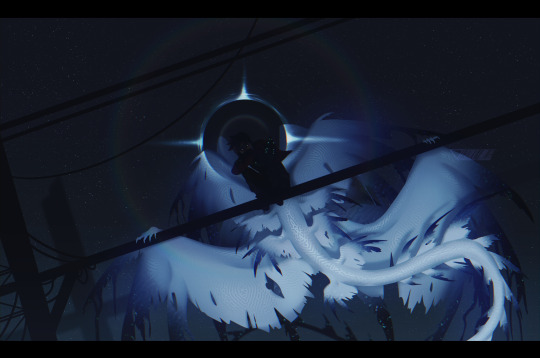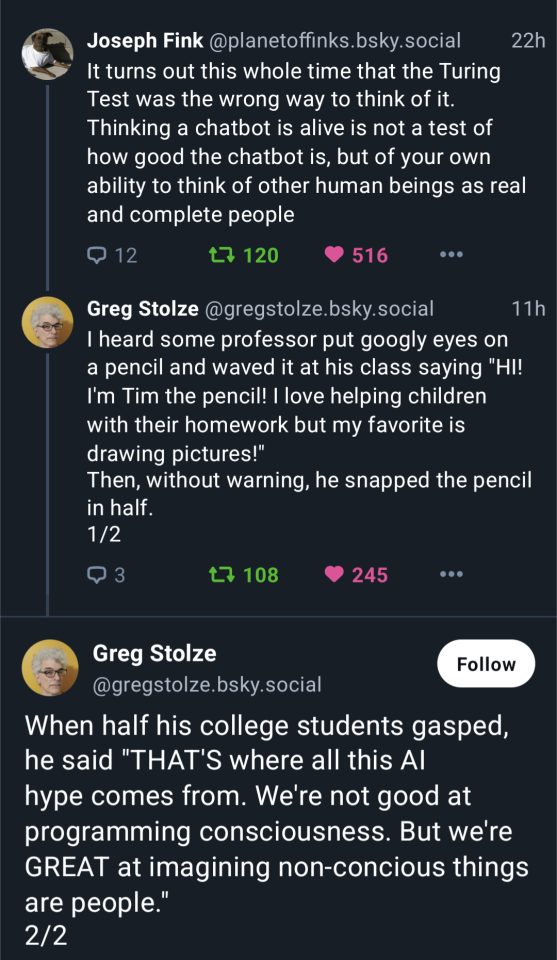#those are turing patterns btw
Explore tagged Tumblr posts
Text
edit: 4k texture upgrade >:)

watching you :)
#i figured out how to draw the plant markings without drawing them by hand#those are turing patterns btw#theyre close enough#studio orange seems to take inspo from those#and sound resonance patterns#esp for the eye markings#theres a moment in the opening where those patterns appear too#and move with the frequency of whatever is playing#super cool detail
1K notes
·
View notes
Note
Belladonna_Graves from AO3 here. Regarding your 'the Spiral is math' headcanon (love that btw, though I like to think it's a mix of the Eye and Spiral), have you watched 'The Infinite Pattern That Never Repeats' on YouTube? Also are cats - being liquids - Spiral?
aaah thank you I'm really glad to have brought Math!Spiral into the world
so the funny thing about being a mathematician is that, like. I tend not to really have watched a lot of mathematical youtube videos, because usually they're giving an overview of something that I either have taken a semester/several semester's worth of classes in, or at least have a solid background in but then the problem being highlighted is thoroughly not my field. but honestly, they are very cool and I should watch more! I just watched 'The Infinite Pattern That Never Repeats' and it's fun, although, like..... if you would like to get into problems that uncountable infinities produces, there are so many more Weird Things math does
like you know tumblr's infinite chocolate bar? it's actually possible. if you cut a sphere into an uncountably infinite number of pieces, you can simply re-arrange those pieces and get two full spheres of the exact same size as the original. you just need, you know, uncountably many, and to apply the Axiom of Choice, which is why some people really don't like the Axiom of Choice. the Axiom of Choice is, like.... the Spiral of mathematics. but at this point it's kind of widespread acceptable and the computer scientists mostly scream at us about it because there are apparently some upsetting results when mixed with Turing machines
#we literally had a grad student joke talk at my uni that was why cats were a liquid#although if you want to get into the real weird physics/chemistry debate#whether glass is a solid or a liquid is a fun one#Veritasium's 'Math Has A Fatal Flaw' actually has my preferable tiling of the plane math problem#but mostly that's because undecidability is FASCINATING to me#wriu#my writing#the math fandom
4 notes
·
View notes
Text
So supposing I get hired as a human image-to-text transcriber for- Chinese is overused as an example, let's say Hangul (the Korean alphabet). I spend all day looking at Hangul letters, looking up the Unicode for it on a chart and typing that code into the computer. (dream job, btw) My chart doesn't tell me how each symbol is pronounced and I have no idea what the texts I'm transcribing are about.
I'll probably be very slow at first and I have to spend a lot of time checking my Hangul-to-Unicode chart for every symbol, but with practice I will improve. Eventually I might be typing in Unicodes in a blur, without ever needing to check my chart. Maybe my bosses could even give me hand-written or partly smudged Korean texts, and I will do a fairly good job at guessing which character comes next (thanks to having seen many such a sequence in my time).
Would you say that at this point, I can understand written Korean?
Just like a native Korean transcriber, I use my eyes to detect the pattern of the symbols, and associate that in my brain with the Unicode number of that symbol. You can put me in a brain scanner and there will be a part of my brain that lights up when I do my transcription.
I have the same competence as a native Korean transcriber, but I have competence without comprehension.
When we teach small children to do math, we would like for them to develop competence as well as comprehension. So on one hand we want them to memorize the times tables, but on the other, we give them word problems. "If I have four baskets and there are six oranges in each basket, how many oranges do I have?" and the child has to figure out from context which operation they have to do with the numbers they just heard. "Four plus six equals ten" is a correct statement, but it is not the right answer to the problem!
Computers are built on programming and programming is based on algorithms, and the definition of an algorithm is that it will produce the correct answer when properly carried out even when the person (or program) doing it has no comprehension of the problem. An algorithm is competence without comprehension.
Every computer program we have today has an equivalent on Turing's universal machine. Turing's machine can read symbols off of a tape, erase and write a new symbol, or move left or right on the tape. It can go into various "states" and it has a finite lookup table for what it will do next, given the current symbol and state.
Turing's machine does not have comprehension. It cannot map the symbols to anything in the real world, because it has no concept of the real world. You can give it a set of instructions that tell it how to convert an input of "view from camera" into an output of "robot moves in a way to avoid obstacles", but that does not give it a concept of "space" or "movement" or "environment". It has nowhere to store those. All it does is follow instructions to produce an output.
I'm not saying we will never be able to create a truly thinking being with circuits and programming instead of meat and chemicals, but it will not happen with a Turing machine. And right now, everything we have is a Turing machine.

159K notes
·
View notes